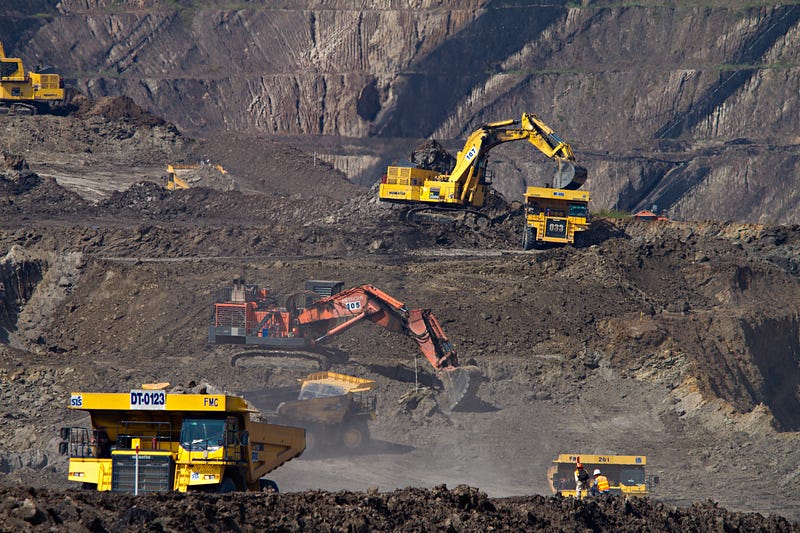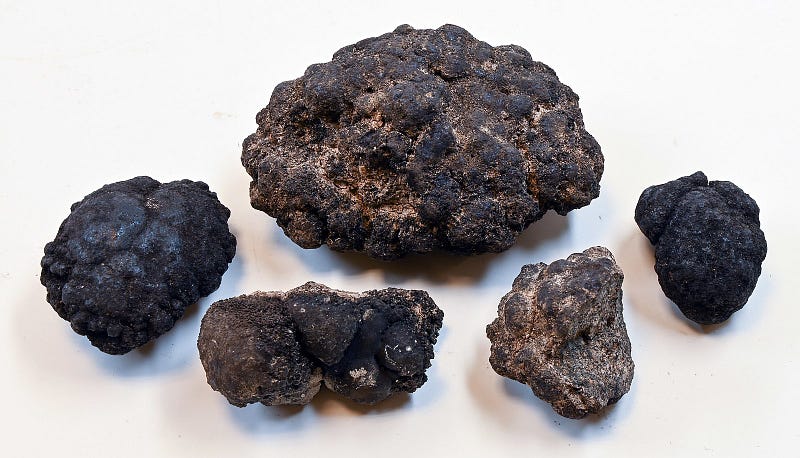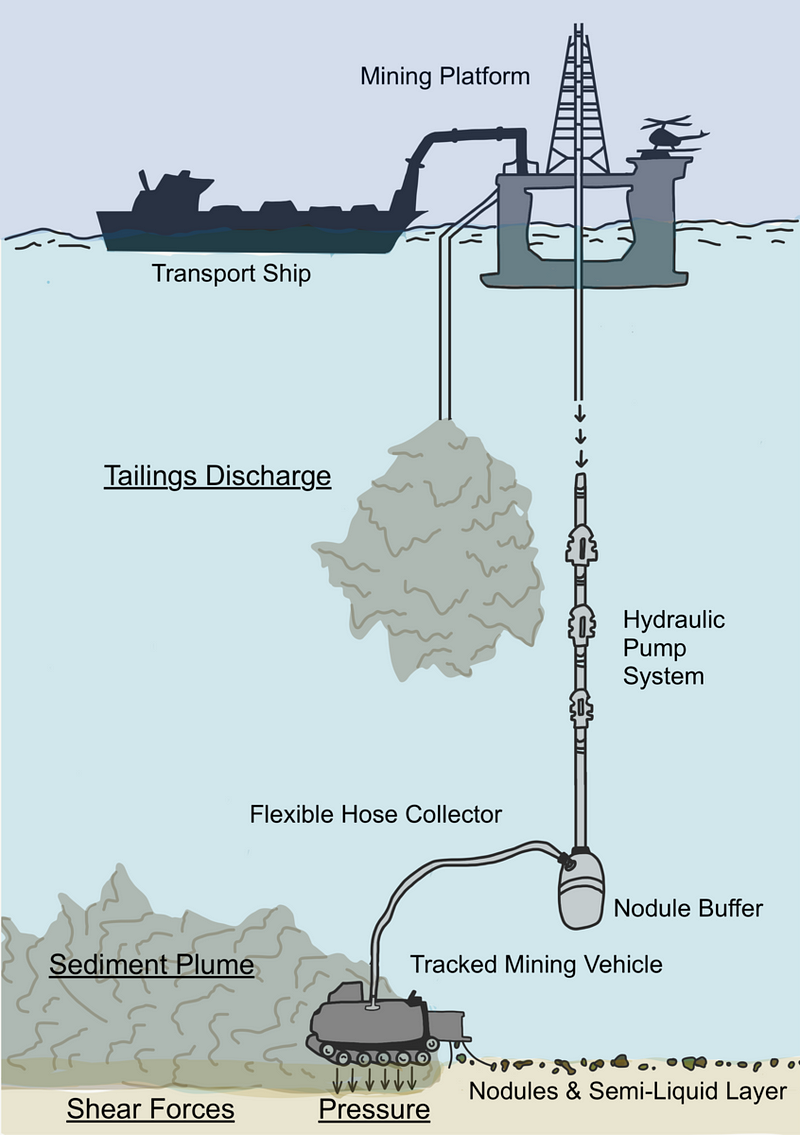Deep-Sea Mining: A Potential Environmental Catastrophe
Written on
Chapter 1: The Dilemma of Deep-Sea Mining
Deep-sea mining presents a paradox: while it could provide essential materials for our advanced technologies, it simultaneously threatens the delicate balance of marine ecosystems. The extraction processes involved can devastate habitats and release harmful pollutants, affecting the environment over extensive areas. With the increasing demand for rare metals, especially for electric vehicles powered by renewable sources like solar and wind, the question arises: can we continue to exploit our planet without dire consequences? New technologies in mining may offer some hope, but they also come with significant risks.

The Reality of Undersea Resources
On land, mining requires extensive excavation, informed by our understanding of geological processes over millennia. However, the situation changes dramatically under the ocean. At depths of 4 to 6 kilometers, a soft silty layer collects organic material, creating what is known as the abyssal plain. Within this dark, alien environment lies an abundance of polymetallic nodules, rich in essential metals such as manganese, nickel, cobalt, and copper.

The formation of these nodules takes millions of years. They grow around a core, similar to a small shell, as metals leach out from the surrounding seawater and sediment, forming layers that eventually create lumps comparable to a tennis ball in size. Notably, these nodules are more prevalent near hydrothermal vents, where superheated water enriches them with additional metals.
The Challenge of Extraction
The concept of harvesting these nodules dates back to the 1960s, when J. L. Mero first proposed it as a viable alternative to traditional mining. Yet, the challenges of deep-sea extraction are substantial. The extreme depths create immense pressure and darkness, making it difficult for conventional submarines to operate effectively.
Recent advancements have led to the creation of a sophisticated deep-sea mining apparatus, consisting of a tracked mining vehicle, hydraulic pump, mining platform, and separator.

The tracked mining vehicle resembles a large, remote-controlled vacuum cleaner, designed to traverse the ocean floor and collect sediment that may contain valuable nodules. Rather than having its own suction mechanism, it relies on a hydraulic pump that transports the material to the surface for processing.
The Environmental Trade-offs
Once on the surface, the collected material undergoes filtration to separate the nodules from the silt. In theory, this method could minimize environmental impacts, especially if powered by renewable energy sources, thus avoiding deforestation and toxic pollution. Economic analyses suggest the industry could generate substantial profits.
However, the deep sea is not a barren wasteland; it is a vibrant ecosystem crucial for global health. The potential ecological consequences of deep-sea mining include nutrient redistribution, carbon release, and a decline in marine biodiversity.
The first video titled "Deep Sea Mining: The Next Climate Disaster No One's Talking About" discusses the environmental risks associated with deep-sea mining, emphasizing the need for awareness and precaution.
The Impact on Ecosystems
The waste generated from mining processes can lead to significant nutrient redistribution. When nodules are extracted, the remaining waste is often dumped back into the ocean, introducing nutrient-rich sludge into surface waters. This could trigger harmful algal blooms, which may deplete oxygen levels and threaten fish populations, directly impacting human communities reliant on fishing.
Additionally, the ocean floor harbors considerable carbon reserves, primarily from decaying marine organisms. The disturbance caused by mining activities could release methane, a potent greenhouse gas, exacerbating climate change.
The second video, "Deep Sea Mining: A New Way Forward or Looming Disaster?" presents a balanced view of the potential benefits and risks of deep-sea mining, urging careful consideration of its environmental implications.
The Fragility of Ocean Biodiversity
The ocean floor boasts high biodiversity despite low biomass, meaning that while few organisms inhabit it, many species coexist. Many of these species rely on delicate feeding mechanisms that could be compromised by sediment disturbance from mining activities. The potential for local extinctions is significant, as the isolated nature of deep-sea habitats makes it difficult for species to recover.
Furthermore, surface species, such as the lanternfish, depend on the health of deep-sea ecosystems. Disruption at this level could have cascading effects throughout the entire oceanic food web, highlighting the interconnectedness of marine life.
Conclusion: A Cautionary Approach
While deep-sea mining technologies might present a solution to reducing our environmental impact, the associated risks to ocean ecosystems could lead to unforeseen consequences. If we can develop methods to extract these resources without significant ecological disruption, it may be feasible to pursue deep-sea mining. Until such methods are established, it is prudent to protect these vital ecosystems rather than exploit them.